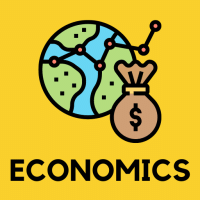Commerce Exam > Commerce Questions > Explain the assumptions of consumer equilibri...
Start Learning for Free
Explain the assumptions of consumer equilibrium.?
Most Upvoted Answer
Explain the assumptions of consumer equilibrium.?
Consumer's equilibrium through indifference curve analysis is based on the following assumptions. The consumer is rational and seeks to maximize his satisfaction through the purchase of goods. The consumer consumes only two goods (X and Y).The income of consumer is given and constant.
Community Answer
Explain the assumptions of consumer equilibrium.?
Consumer’s Equilibrium: Interplay of Budget Line and Indifference Curve
Consumer’s Equilibrium
The consumer is in equilibrium when he maximizes his utility, given his income and the market prices.
Every consumer aims at getting maximum satisfaction out of his given expenditure. A consumer is said to have attained equilibrium when he spends given income or budget in such a way as to yield optimum satisfaction, given the prices of two goods and the consumer’s preference.
In simple words, a consumer is said to be in equilibrium when he is getting maximum satisfaction out of his limited income.
A consumer may find out his equilibrium condition with the help of indifference curve analysis.
Assumptions
Consumer’s equilibrium through indifference curve analysis is based on the following assumptions.
The consumer is rational and seeks to maximize his satisfaction through the purchase of goods.
The consumer consumes only two goods (X and Y).
The goods are homogenous and perfectly divisible.
Prices of the goods and income of the consumer are constant.
The indifference map for goods X and Y are given. The indifference map is based on the consumer’s preferences for the goods.
The preference or habit of the consumer does not change throughout the analysis.
The income of consumer is given and constant.
Consumer’s Equilibrium
The consumer is in equilibrium when he maximizes his utility, given his income and the market prices.
Every consumer aims at getting maximum satisfaction out of his given expenditure. A consumer is said to have attained equilibrium when he spends given income or budget in such a way as to yield optimum satisfaction, given the prices of two goods and the consumer’s preference.
In simple words, a consumer is said to be in equilibrium when he is getting maximum satisfaction out of his limited income.
A consumer may find out his equilibrium condition with the help of indifference curve analysis.
Assumptions
Consumer’s equilibrium through indifference curve analysis is based on the following assumptions.
The consumer is rational and seeks to maximize his satisfaction through the purchase of goods.
The consumer consumes only two goods (X and Y).
The goods are homogenous and perfectly divisible.
Prices of the goods and income of the consumer are constant.
The indifference map for goods X and Y are given. The indifference map is based on the consumer’s preferences for the goods.
The preference or habit of the consumer does not change throughout the analysis.
The income of consumer is given and constant.

|
Explore Courses for Commerce exam
|

|
Question Description
Explain the assumptions of consumer equilibrium.? for Commerce 2025 is part of Commerce preparation. The Question and answers have been prepared according to the Commerce exam syllabus. Information about Explain the assumptions of consumer equilibrium.? covers all topics & solutions for Commerce 2025 Exam. Find important definitions, questions, meanings, examples, exercises and tests below for Explain the assumptions of consumer equilibrium.?.
Explain the assumptions of consumer equilibrium.? for Commerce 2025 is part of Commerce preparation. The Question and answers have been prepared according to the Commerce exam syllabus. Information about Explain the assumptions of consumer equilibrium.? covers all topics & solutions for Commerce 2025 Exam. Find important definitions, questions, meanings, examples, exercises and tests below for Explain the assumptions of consumer equilibrium.?.
Solutions for Explain the assumptions of consumer equilibrium.? in English & in Hindi are available as part of our courses for Commerce.
Download more important topics, notes, lectures and mock test series for Commerce Exam by signing up for free.
Here you can find the meaning of Explain the assumptions of consumer equilibrium.? defined & explained in the simplest way possible. Besides giving the explanation of
Explain the assumptions of consumer equilibrium.?, a detailed solution for Explain the assumptions of consumer equilibrium.? has been provided alongside types of Explain the assumptions of consumer equilibrium.? theory, EduRev gives you an
ample number of questions to practice Explain the assumptions of consumer equilibrium.? tests, examples and also practice Commerce tests.

|
Explore Courses for Commerce exam
|

|
Signup for Free!
Signup to see your scores go up within 7 days! Learn & Practice with 1000+ FREE Notes, Videos & Tests.























